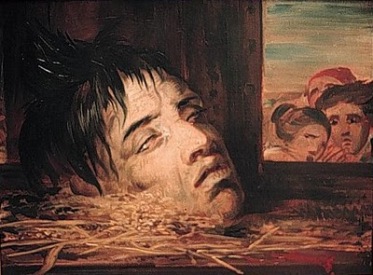
“Widower Bluebeard and the Red Key” – a painting from Cassia Lupo’s wonderful series “Fables and myths.” Reproduced with permission and grateful thanks.
For very nearly all its course, the Blavet is a placid river. It winds its way through central Brittany: broad, unhurried, gentle and unthreatening, a favourite among fishermen, and – for the century or so since it was dammed at Guerlédan, creating a substantial lake – a magnet for holidaymakers, too. Yet even there, at the heart of an ancient county that knows its history as well as anywhere in France, not one person in a thousand could tell the awful history of the river. Few realise that there were times when it was not so tame, or can point to where the outlines of an ancient fortress can yet be traced, up on the heights above the dam. And almost nobody recalls the lord of that forgotten castle, or could tell you why, until about 150 years ago, Breton peasants crossed themselves at the mere mention of his name.
His name was Conomor the Cursed, and he lived in the darkest of the Dark Ages – in the first half of the 6th century, 150 years or more after the fall of Rome, when much of Brittany was still dotted with dolmens and covered by primeval forest, when warlords squabbled with one another other over patrimonies that were generally less than 40 miles across, and the local peoples were as likely to be pagan as they were Christian. We know almost nothing about him, save that he was probably a Briton, very probably a tyrant, and that his deeds were remembered long enough to give rise to a folkloric tradition of great strength – one that endured for almost 1,500 years. But the folk-tales hint at someone quite extraordinary. In local lore, Conomor not only continued to roam the vast forest of Quénécan, south of his castle, as a bisclaveret – a werewolf – and served as a spectral ferryman on another Breton river, making off with Christian souls; he was also the model for Bluebeard, the monstrous villain of Charles Perrault’s famous fairy tales. Continue reading





